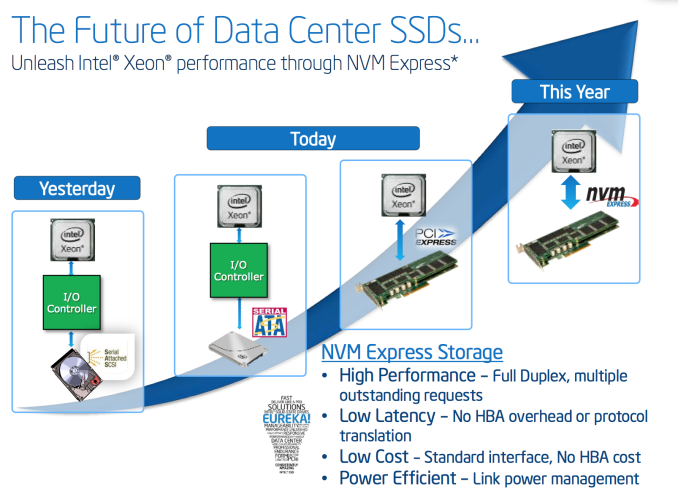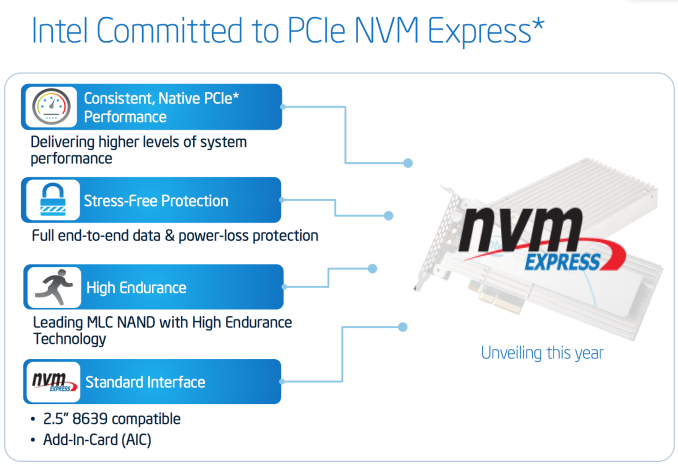
Intel caught the modern SSD wave early with the X25-M back in 2008. It was the X25-M that brought me into covering SSDs and made me a convert. Since then however the SSD space has been engaged in a full blown race to the bottom. Storage is viewed by most OEMs to be a commodity, and Intel as a whole likes playing in higher margin areas of the PC business.
We’re heading towards the next phase in SSD evolution however with the transition away from SATA to PCIe. This year is when we’ll see NVMe start to gain traction, and with that comes a new playing field for SSD competitors.
Intel let us know that there will be a big announcement from its Non-Volatile Memory Solutions Group (NSG) next Wednesday (June 4th) at 2AM ET. The timing coincides with Intel’s Computex keynote, so I think it’s pretty safe to say that we’ll see the next big SSD from Intel announced at that point. Intel already announced that it would be bringing NVMe based drives to market this year, Computex would make for a great event to launch at.

With NVMe, storage gets treated like a first class citizen. No longer hanging off of a host bus adaptor, NVMe based SSDs interface directly via PCIe to the host system. Combined with a new interface spec, the result is much lower latency access to NAND (as well as an increase in bandwidth from ditching SATA). There are other benefits like lower CPU utilization as well. NVMe support is baked into Windows 8.1 as well as Windows Server 2012 R2.
Ian, Kristian and myself will all be at Computex next week, so expect coverage on this announcement and more.






